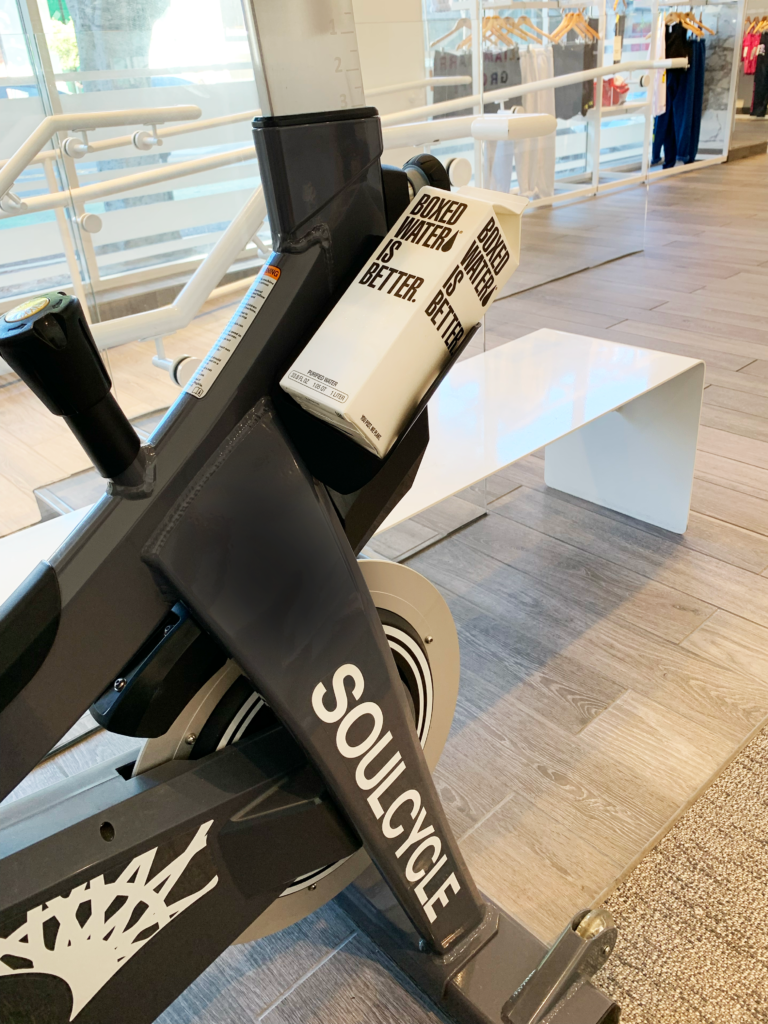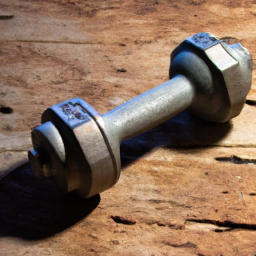Looking to get started on your fitness journey? Maybe you’re a complete beginner or just getting back into the swing of things after a long break. Either way, we’ve got you covered with 10 beginner-friendly workout routines that will help you kickstart your fitness journey. In this article, we’ll guide you through each routine, explaining the exercises and providing modifications for different fitness levels. Whether you’re looking to improve your strength, cardio, flexibility, or all three, these routines will set you on the right track. So, grab your gym clothes and let’s get started!
First up on our list is a full-body strength training routine. We’ll show you exercises targeting major muscle groups such as squats for your legs, push-ups for your chest and arms, and planks for your core. Don’t worry if you’re not able to do the exercises with weights yet – we’ll suggest alternatives using just your body weight. Next, we’ll move onto a cardio routine that will get your heart pumping and your lungs working. From jumping jacks to mountain climbers, these exercises are great for burning calories and improving cardiovascular endurance.
If you’re someone who’s looking to improve flexibility and mobility, we’ve got a routine just for you. We’ll introduce you to stretches and yoga poses that will help increase your range of motion and reduce muscle stiffness. And for those who prefer a more structured approach, we’ve included a HIIT (High-Intensity Interval Training) routine that combines bursts of intense exercise with short rest periods. This routine is perfect for those looking to maximize calorie burn and challenge themselves.
In the article, we’ll provide detailed instructions for each routine, along with tips on technique and how to progress as you get stronger and fitter. So, whether you’re a complete beginner or just looking for some new workout ideas, these 10 beginner-friendly workout routines are a great way to kickstart your fitness journey. Keep reading to learn more and get ready to sweat!

Setting Fitness Goals
Understanding the Importance of Setting Fitness Goals
Setting fitness goals is a crucial step in embarking on your fitness journey. Not only do goals provide direction and motivation, but they also help you track your progress and celebrate your achievements along the way. When you have clear fitness goals, you are more likely to stay committed and make the necessary lifestyle changes to achieve them.
Determining Your Personal Fitness Goals
Before diving into any workout routine, it’s important to take the time to determine your personal fitness goals. Ask yourself what you want to achieve through exercise. Are you looking to lose weight, build strength, improve cardiovascular health, enhance flexibility, or a combination of these? Identifying your specific goals will allow you to tailor your workouts and focus on the areas that matter most to you.
Creating Realistic and Achievable Goals
While it’s important to challenge yourself, it’s equally important to set realistic and achievable goals. Setting goals that are too difficult or unrealistic can lead to frustration and disappointment, potentially derailing your fitness journey. Start by setting small, attainable goals that you can gradually build upon. As you achieve each goal, set new ones that push you a little further. Remember, progress is progress, no matter how small.
Cardiovascular Exercises
Importance of Cardiovascular Exercises for Beginners
Cardiovascular exercises, also known as cardio workouts, are essential for beginners as they help improve heart health, increase endurance, and burn calories. Engaging in regular cardio workouts can also boost mood, reduce stress, and increase overall energy levels. These exercises get your heart pumping, improving blood circulation and supplying oxygen to your muscles.
Different Types of Beginner-Friendly Cardio Exercises
There are numerous beginner-friendly cardio exercises to choose from, each catering to different preferences and fitness levels. Walking is a great low-impact cardio exercise that can be easily incorporated into your daily routine. Other popular options include jogging, cycling, swimming, and dancing. Choose activities that you enjoy to make your cardio workouts more enjoyable and sustainable in the long run.
Creating a Cardio Routine for Beginners
To create an effective cardio routine for beginners, aim for at least 150 minutes of moderate-intensity cardio or 75 minutes of vigorous-intensity cardio per week. Start with shorter sessions and gradually increase the duration and intensity as your fitness level improves. Alternate between different cardio exercises to keep things interesting and target different muscle groups. Remember to warm up before each session and cool down afterward to prevent injury.

Strength Training
Benefits of Strength Training for Beginners
Strength training, also known as resistance training, is a crucial component of any well-rounded workout routine. It helps build lean muscle mass, improve bone density, increase metabolism, and enhance overall strength and stability. Engaging in regular strength training can also boost endurance, reduce the risk of injury, and improve body composition by burning fat and toning muscles.
Basic Strength Exercises for Beginners
There are many basic strength exercises that beginners can incorporate into their workout routine. These exercises target major muscle groups and can be performed using bodyweight or with the assistance of dumbbells, resistance bands, or weight machines. Some examples of beginner-friendly strength exercises include squats, lunges, push-ups, planks, and bicep curls. Start with lighter weights or no weights at all and focus on maintaining proper form to minimize the risk of injury.
Developing a Strength Training Routine
To develop a strength training routine, aim for two to three sessions per week, targeting different muscle groups each session. Allow for rest days in between to allow your muscles to recover and grow stronger. Start with one set of 10-15 repetitions of each exercise and gradually increase the number of sets and repetitions as your strength improves. It’s important to challenge yourself while maintaining proper form to maximize results.
Flexibility and Stretching
Why Flexibility is Important for Beginners
Flexibility is often overlooked but plays a vital role in overall fitness and preventing injuries. Being flexible allows for a wider range of motion in your joints, improves posture, reduces muscle soreness, and enhances athletic performance. Incorporating regular flexibility and stretching exercises into your workout routine can help increase muscle flexibility, relieve tension, and promote relaxation.
Different Stretching Exercises for Beginners
There are two main types of stretching exercises: static stretching and dynamic stretching. Static stretching involves holding a stretch for 15-30 seconds, while dynamic stretching involves movement through a full range of motion. Both types of stretching can be beneficial for beginners. Some beginner-friendly stretching exercises include hamstring stretches, calf stretches, shoulder stretches, and quadricep stretches. Remember to perform these exercises after a proper warm-up or at the end of your workout routine.
Incorporating Stretching into Your Workout Routine
To incorporate stretching into your workout routine, set aside at least 10-15 minutes for stretching exercises. Perform a variety of stretches targeting different muscle groups to improve overall flexibility. It’s important to stretch both before and after your workout to warm up your muscles and prevent injury. Listen to your body and avoid pushing yourself too far, as stretching should be gentle and not painful.

Bodyweight Workouts
Advantages of Bodyweight Workouts for Beginners
Bodyweight workouts are a fantastic option for beginners as they require no equipment and can be done anywhere, making them convenient and cost-effective. These workouts utilize your own body weight as resistance, helping build strength, improve flexibility, and increase endurance. Bodyweight exercises also engage multiple muscle groups simultaneously, providing a full-body workout.
Essential Bodyweight Exercises for Beginners
There are numerous bodyweight exercises that beginners can incorporate into their workout routine. Squats, lunges, push-ups, planks, mountain climbers, and burpees are just a few examples. These exercises target major muscle groups and can be modified to suit different fitness levels. Start with a few repetitions of each exercise and gradually increase the number as your fitness improves. Focus on maintaining proper form to maximize the effectiveness of each movement.
Building a Bodyweight Workout Routine
To build a bodyweight workout routine, choose a variety of exercises that target different muscle groups. Aim for a balanced workout that includes both upper body, lower body, and core exercises. Perform each exercise for a set amount of repetitions or for a specific amount of time, alternating between exercises to give yourself short periods of rest. As you become more comfortable with bodyweight exercises, you can increase the difficulty by adding variations or incorporating additional exercises.
Introduction to Weightlifting
Understanding the Basics of Weightlifting for Beginners
Weightlifting involves using free weights or weight machines to target specific muscle groups and promote strength and muscle growth. As a beginner, it’s important to start with proper form and lighter weights to avoid injury. Focus on learning the basic movements and gradually increase the weight as your strength improves. Weightlifting can be intimidating for beginners, but with proper guidance and technique, it can be an excellent addition to your fitness routine.
Key Weightlifting Exercises for Beginners
Some key weightlifting exercises that beginners can start with include bench press, shoulder press, bicep curls, tricep dips, goblet squats, and deadlifts. These exercises target different muscle groups and can be performed using dumbbells or a barbell. Start with lighter weights and gradually increase the load to challenge your muscles and promote muscle growth. Remember to always maintain proper form and engage your core for stability.
Creating a Weightlifting Program
To create a weightlifting program, aim for two to three sessions per week, targeting different muscle groups each session. Allow for a day or two of rest in between to allow your muscles to recover and grow stronger. Start with one or two sets of 8-12 repetitions of each exercise and gradually increase the number of sets and repetitions as your strength improves. It’s important to challenge yourself while maintaining proper form to ensure the effectiveness of each exercise.
Yoga and Pilates
Benefits of Yoga and Pilates for Beginners
Yoga and Pilates are both excellent options for beginners, as they focus on improving flexibility, balance, and core strength. These practices also emphasize mindfulness, relaxation, and stress reduction. Engaging in regular yoga and Pilates sessions can improve posture, increase body awareness, and promote overall well-being. Both disciplines offer a variety of modifications and levels, making them accessible to individuals of all fitness levels.
Beginner-Friendly Yoga Poses and Pilates Exercises
In yoga, beginner-friendly poses include downward dog, child’s pose, warrior pose, tree pose, and corpse pose. These poses help increase flexibility, build strength, and promote relaxation. In Pilates, beginner-friendly exercises focus on core stability, such as the hundred, the bridge, the single-leg stretch, and the Pilates roll up. These exercises target the core muscles and improve overall body strength.
Incorporating Yoga and Pilates into Your Routine
To incorporate yoga and Pilates into your routine, aim for two to three sessions per week. Attend classes or follow online tutorials that cater to beginners. Start with shorter sessions and gradually increase the duration as your flexibility and strength improve. Both practices can complement other workouts or be done on their own as a complete workout. Listen to your body and choose poses or exercises that feel comfortable and enjoyable for you.
Circuit Training
Overview of Circuit Training
Circuit training involves performing a series of exercises in quick succession, with minimal rest in between. It is an efficient and time-effective way to combine cardio and strength training into one workout. Circuit training workouts typically include a combination of resistance exercises, bodyweight exercises, and cardiovascular exercises. This type of training helps improve overall fitness, burn calories, and increase muscular endurance.
Designing a Circuit Training Workout for Beginners
To design a circuit training workout for beginners, select a variety of exercises that target different muscle groups and cardiovascular fitness. Choose exercises that can be performed using bodyweight or lightweight equipment, such as dumbbells or resistance bands. Perform each exercise for a set amount of time or a specific number of repetitions before moving on to the next. Allow for short rest periods between exercises and complete multiple rounds of the circuit.
Maximizing Efficiency with Circuit Workouts
To maximize the efficiency of your circuit workouts, focus on performing each exercise with proper form and intensity. Aim to keep your heart rate elevated throughout the entire circuit by minimizing rest time. Incorporate compound exercises that engage multiple muscle groups simultaneously to maximize calorie burn and overall effectiveness. As your fitness level improves, increase the intensity by adding more challenging exercises or increasing the duration of each exercise.
Interval Training
Understanding the Concept of Interval Training for Beginners
Interval training involves alternating between periods of high-intensity exercise and periods of rest or low-intensity exercise. This type of training is highly effective in improving cardiovascular fitness, boosting metabolism, and burning calories in a short amount of time. It can be done with various forms of cardio exercises, such as running, cycling, or jump roping. Interval training is suitable for beginners as it can be adapted to different fitness levels.
Effective Interval Workouts for Beginners
To perform an effective interval workout, start with a warm-up to prepare your muscles. Then, choose a cardio exercise of your choice, such as running or cycling, and alternate between short bursts of high-intensity effort and periods of low-intensity effort or rest. For example, you could sprint for 30 seconds and then walk or jog for one minute. Repeat this cycle for a set duration or number of repetitions.
Creating Interval Training Routines
To create interval training routines, consider your fitness level and goals. Begin with shorter intervals and gradually increase the intensity and duration as your fitness improves. Experiment with different exercises and interval ratios to keep your workouts challenging and engaging. Remember to cool down and stretch at the end of each session to promote recovery and prevent muscle soreness.
Conclusion
Recap of Beginner-Friendly Workout Routines
Embarking on a fitness journey can be both exciting and overwhelming, but with the right workout routines, you can kickstart your progress and achieve your goals. Remember to start by setting clear and attainable fitness goals. Incorporate a variety of workouts, including cardiovascular exercises, strength training, flexibility and stretching exercises, bodyweight workouts, weightlifting, yoga and Pilates, circuit training, and interval training. Each of these workouts offers unique benefits and can be tailored to suit your fitness level and preferences.
Importance of Consistency and Progress Tracking
Consistency is key in achieving your fitness goals. Create a manageable workout schedule and stick to it, allowing for rest days to promote recovery. It’s also important to track your progress by keeping a workout journal, taking measurements, or using fitness apps. Tracking your progress not only allows you to celebrate your achievements but also provides insights into areas that may need improvement.
Tips for Staying Motivated on Your Fitness Journey
Staying motivated throughout your fitness journey can be challenging, but there are several strategies that can help. Find a workout routine that you genuinely enjoy and look forward to. Set small milestones to celebrate along the way. Stay accountable by exercising with a friend or using a fitness app that shares your progress with others. Remember to listen to your body, rest when needed, and adjust your workouts as you progress. Most importantly, be kind to yourself and recognize that it’s a journey, not a race.
Embarking on a fitness journey can be a transformative experience, both physically and mentally. With these ten beginner-friendly workout routines, you are well-equipped to kickstart your fitness journey and make positive changes in your life. So lace up your sneakers, put on your workout gear, and get ready to unlock your full potential. You’ve got this!


